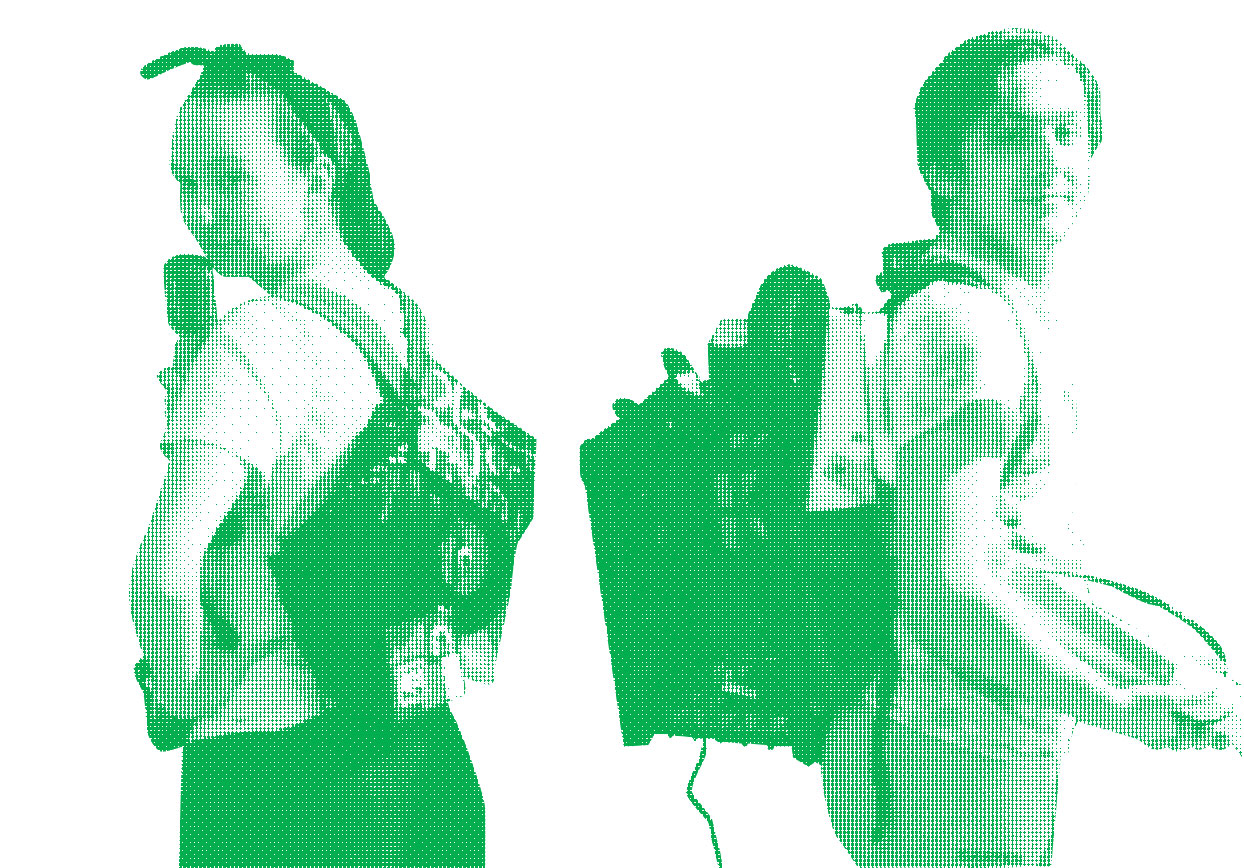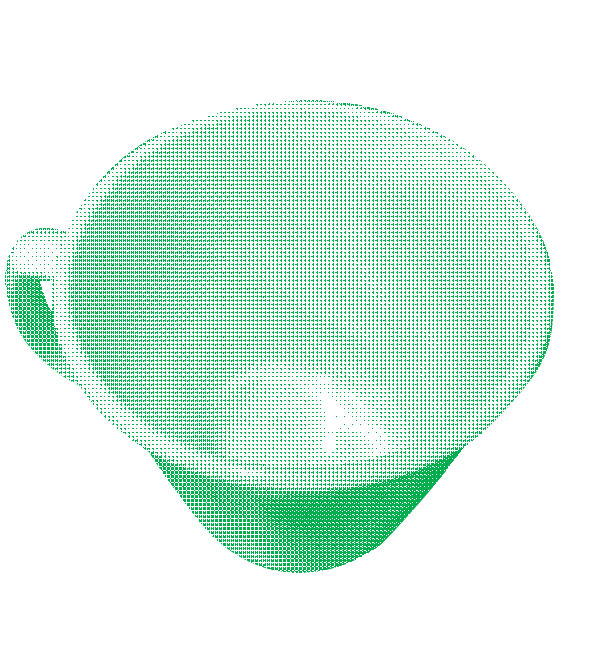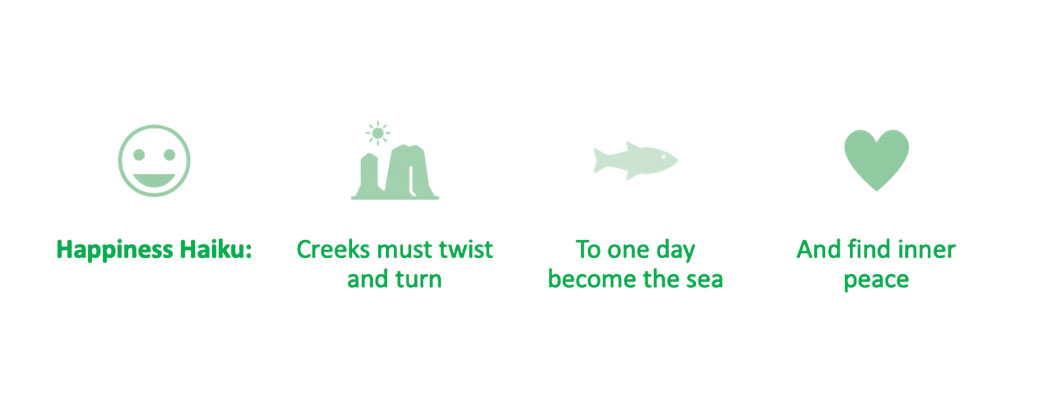In early March, students in Nomi Eve’s Story Medicine course presented their final class project — a half-hour live skit they write and perform for children hospitalized with serious illnesses — inside the lobby of the Children’s Hospital of Philadelphia. The performance was their last of the term, a culmination of the course’s mission to connect college coursework to the real-world needs of the community.
It was supposed to be a joyful event, but Eve, an assistant teaching professor and director of the creative writing MFA in the College of Arts and Sciences, couldn’t help but feel anxious and sad. The uncertainty of what was to come weighed heavily on everyone’s minds. “I felt like we were watching fiddlers play on the Titanic,” she says.
It wasn’t just that Eve worried about the final days of class for her current students.
It was also that she couldn’t envision what spring quarter — let alone all the remote classes to follow — might look like for a course that for all of its four years in production had thrived exclusively on the electricity and serendipity of in-person entertainment.
As she mulled her options, she felt pessimistic. “My first thought was, ‘Let’s just cancel this, it doesn’t make sense,’” she recalls.
But then, she began thinking bigger. She didn’t need to tweak her course around the edges. She decided to overhaul it.
What if instead of the vibrant but unstructured interaction with hospitalized children that students had had in previous courses, Eve set up Zoom interviews with the children so students could ask them about their personal struggles? What if instead of relying solely on local experts, she reached out to former students, parents and children’s book authors around the world? What if instead of leaning on live performance, students translated their work to online platforms including YouTube and TikTok, where they can give the gift of soothing entertainment to any child living with chronic disease anywhere in the world?
 Homemade Ghostbuster Packs: Westphal College of Media Arts & Design students were asked to get creative with what they could find at home to create, or recreate, props. Here, entertainment and arts management student Lyndsey Connolly and architecture major Aaron Forsman model the “Ghostbusters”-style proton packs they made for a theatre production course taught by Mandell Theater Technical Director Chris Totora.
Homemade Ghostbuster Packs: Westphal College of Media Arts & Design students were asked to get creative with what they could find at home to create, or recreate, props. Here, entertainment and arts management student Lyndsey Connolly and architecture major Aaron Forsman model the “Ghostbusters”-style proton packs they made for a theatre production course taught by Mandell Theater Technical Director Chris Totora.
Within days, the larger world of possibilities for the course opened up to her, and she drafted a syllabus that included the elements she’d dreamed up over the two-week break. “I knew we were on the edge of radical change,” she says.
Her class for spring quarter looked entirely different — but it was also, she admits with some surprise, better in many ways. “When we could be at the hospital, I didn’t have to think outside of that environment or outside the box,” Eve says. “All of the things that we started doing [because of the virus] were things we should have been working on all along. And they’re also things that we should carry with us into the post-pandemic world.”
Certainly, circumstance has forced professors’ hands, but across many courses and every college, instructors haven’t just stepped up to meet this challenge. Many have used this time as a chance to experiment with the unfamiliar and reimagine their teaching. And while faculty uniformly say they’d never willingly give up the dynamism of in-person learning, the lessons of remote teaching are reverberating in ways that will make many Drexel classes more engaging and relevant when normality returns.
Remote teaching: Fundamentals, not format, matter
One of the perks of Assistant Teaching Professor Emil Polyak’s Spatial Data Capture course in pre-pandemic times was access to equipment that is used for movie special effects and other types of animation. In the Westphal College of Media Arts & Design, students in the Department of Digital Media have the chance to use the most advanced software and even a special “magic lab” with motion-capture cameras and technology.
When everyone went home, Polyak knew he’d have to reinvent the class on the fly. Fortunately, he was able to turn to tech that most students carry in their pockets: their smartphones. Using the technology embedded in their devices — accelerometers, gyroscopes, magnetometers — students could connect to a virtual being. For example, students could create animated faces whose eyes roll up and down when the phone moves up and down. “Suddenly, they were doing puppetry,” Polyak says.

Students in Assistant Professor Joseph Larnerd’s History of Modern Design course created a museum-worthy interpretative label for an object from their home, for a digital exhibit that explores the emotional life of everyday objects called “The Museum of Where We Are.” Jessica Summers wrote this label for her mother’s apricot grove mug: “…These faded tea lines illustrate years of my mother’s long days at work and our nightly conversations around the kitchen table. They remember times when my mother did not finish a cup of tea, instances when her routine was altered, and occasions when she left the cup in the sink for too long. These lines represent many things, but most importantly, they represent the connection between a mother and daughter that has lasted for over 20 years. Our connection may change, but I take solace in the fact that, like these faded lines, it will endure the test of time.”
The quick adaptation was successful on its own. But even more than that, it helped remind Polyak to stay focused on the true foundational skills of the discipline. “New techniques and hardware can come out two or three times a year,” he observes. “Students always need to be learning new things. What they need [from the class] is to learn the fundamentals: What are you trying to capture? What is the data about?”
When students know that they will always have to dig beyond the technology to ask these root questions, they can excel no matter how much the software and hardware change. Their skills will never be obsolete.
Meshagae Hunte-Brown (PhD ’06), a teaching professor in the Department of Biology, also found herself refocusing her syllabus and lab courses when the pandemic hit. She trimmed back a syllabus that had ballooned, while encouraging students to spend more time in Labster, a virtual lab.
While she is quick to point out that a virtual lab has its drawbacks — no online frog dissection will give students the visceral sense of a scalpel slicing through skin — it did offer unique advantages. For example, students could easily repeat experiments without worrying about running out of time during a two-hour lab slot or wasting expensive reagents. “If you’re running a protocol in a true lab experience and you make a mistake 50 minutes in? You’re pretty much toast,” Hunte-Brown says. “In a lab simulation, you can repeat the experiment over and over again.”
Hunte-Brown can easily imagine using a mix of in-person and virtual labs in the future to make the most of students’ time and accelerate their learning.
Drawing meaning from a moment
Meanwhile, in the Dornsife School of Public Health, Professor Nancy Epstein had spent countless hours developing her new Arts for Community Health and Wellness course and couldn’t wait for its debut.
The date for the course’s big launch? Spring quarter 2020.
She had mapped out a plan that required methodical research on arts and community health. But in a matter of days in March, “community health” took on an entirely new, urgent meaning. As the impact of the virus accelerated, her entire course began to feel wrong for the moment.
She slashed the syllabus that she had painstakingly developed and came up with a new plan that was fluid and personal. She created a two-pronged project for students to explore the emerging universe of pandemic arts through weekly portfolios and journal entries. The art was evolving in real time, and she gave her students permission to take a front-row seat.
She and her students worked together to create the course. Students helped frame the assignments — in which they collect and analyze an item of music, theater, photography, poetry or some other visual work created by artists across the world to help people cope with the pandemic — and chose how to curate their end-of-term portfolios. “That sense of participation drove a deeper learning experience, because they were part of it,” she says.
It opened her eyes to the importance of encouraging students to identify public health issues that hold personal currency for them — a pandemic, systemic racism — and build portfolios that illuminate those issues. “I want the courses I teach to create opportunities for students to learn things that they’ll use in the future,” she says. “It’s not just about getting through the course. It’s about adding meaning to it.”
Art took on a different meaning for Westphal College Assistant Professor Joseph Larnerd, too.
In a typical year, students in his History of Modern Design course spend a lot of time in the storerooms of The Drexel Collection. The unique 130-year-old collection holds materials, crafts and furniture amassed by Drexel’s first president — not for display, but for the hands-on study of how objects are made.
The collection was a big reason Larnerd was excited about teaching at Drexel, he says. “We can explore how Federal and Empire furniture influenced how their historic users moved and presented themselves by actually sitting in period chairs produced in these styles,” he says. “There’s an immediate connection there that gets students jazzed and eager to learn more about material culture. I was bummed out that students weren’t going to have that kind of access in the spring.”
But if the Drexel Collection teaches anything, it’s that you don’t need masterpieces to grasp how design historians use objects to examine the past. “Instead, I thought, let’s lean into the histories and emotional lives of our own objects,” Larnerd recalls.
He asked students to think deeply about an object within their home — ordinary, practical items with no particular artistic pedigree but strong personal value.
Out of the project came “The Museum of Where We Are,” an online exhibit of everyday objects thoughtfully labeled by student curators.
 This Japanese haiku was created by School of Biomedical Engineering, Science & Health Systems biomedical engineering student Nhat Duong as part of an assignment for a Pennoni Honors College course called “Happiness” taught by Athletic Director and Carl R. Pacifico Professor of Neuropsychology Eric Zillmer.
This Japanese haiku was created by School of Biomedical Engineering, Science & Health Systems biomedical engineering student Nhat Duong as part of an assignment for a Pennoni Honors College course called “Happiness” taught by Athletic Director and Carl R. Pacifico Professor of Neuropsychology Eric Zillmer.
In one label, a handmade cookie jar given to the author by an ex–best-friend triggers recollections of connection and loss. A gold-chain necklace passed down through a family evokes rumination on slavery, cornrow braids and the sacredness of heirlooms. In another, a student awakens to how her yoga mat carried her during the pandemic.
“In my own work I focus on working-class material culture,” says Larnerd. “But so much of how I was introduced to art and in survey classes was about: ‘This is the master work. This is how the masterwork came to be. Here are the influences. Here’s the iconography.’ For me, what’s so fascinating about studying objects, especially everyday objects, is that they were used by people who had real connections to them [and that gets into] why we save some things and why we don’t save other things.”
Meanwhile, in the College of Engineering, LD Betz Professor of Environmental Engineering Charles Haas went beyond revamping an existing course; he quickly developed a new course called Coronavirus and Engineering. He covered topics including the properties of a virus and factors that influence viral survival. He and students talked about how masks and indoor ventilation work. Had the course run longer, he muses, he would have tackled an increasingly urgent issue: the complicated logistics associated with scaling up for vaccine production.
It wasn’t the first time that Haas, whose research specialization is microbiological risk assessment, has seen the timelessly valuable engineering curriculum made relevant by a sudden biological health crisis. In 2001, he taught a course about anthrax when a scare bubbled up after the September 11.
For Haas, these spontaneous courses are perfect for demonstrating the relevance of engineering’s foundational principles in addressing up-to-the minute challenges. “We try to give students good basic knowledge,” he says. “Once you’ve got that, you should be applying that knowledge to emerging problems as they come along.”
Iterations toward new inventions
Despite successes with remote teaching, faculty members say everyone is eager to return to the classroom — there is simply a spark from in-person learning that can’t yet be replicated online. But within pandemic restraints, many found themselves thinking bigger than they ever could have imagined.
Dana Kemery, who has worked with countless professors as the director of innovative course design and technological infusion, says that Drexel faculty members across the board responded to these difficult months with exceptional creativity and flexibility. “[This time] is changing people’s preconceptions of what education is and what people can do,” she says. “It’s opened people’s eyes to the possibilities.”
When faculty adapted to the disruption — expanding their audience, tapping distant experts, or applying unexpected tools to fundamental concepts — they became learners in how to make their teaching better, and the lessons will outlast this crisis. “Now that they’ve had these experiences, they won’t go back to the way it was before,” Kemery predicts.
Eve knows it’s possible, because she experienced it already with Story Medicine. “[This moment] will make us better and stronger in the future,” she says.
With additional reporting by Sonja Sherwood.
